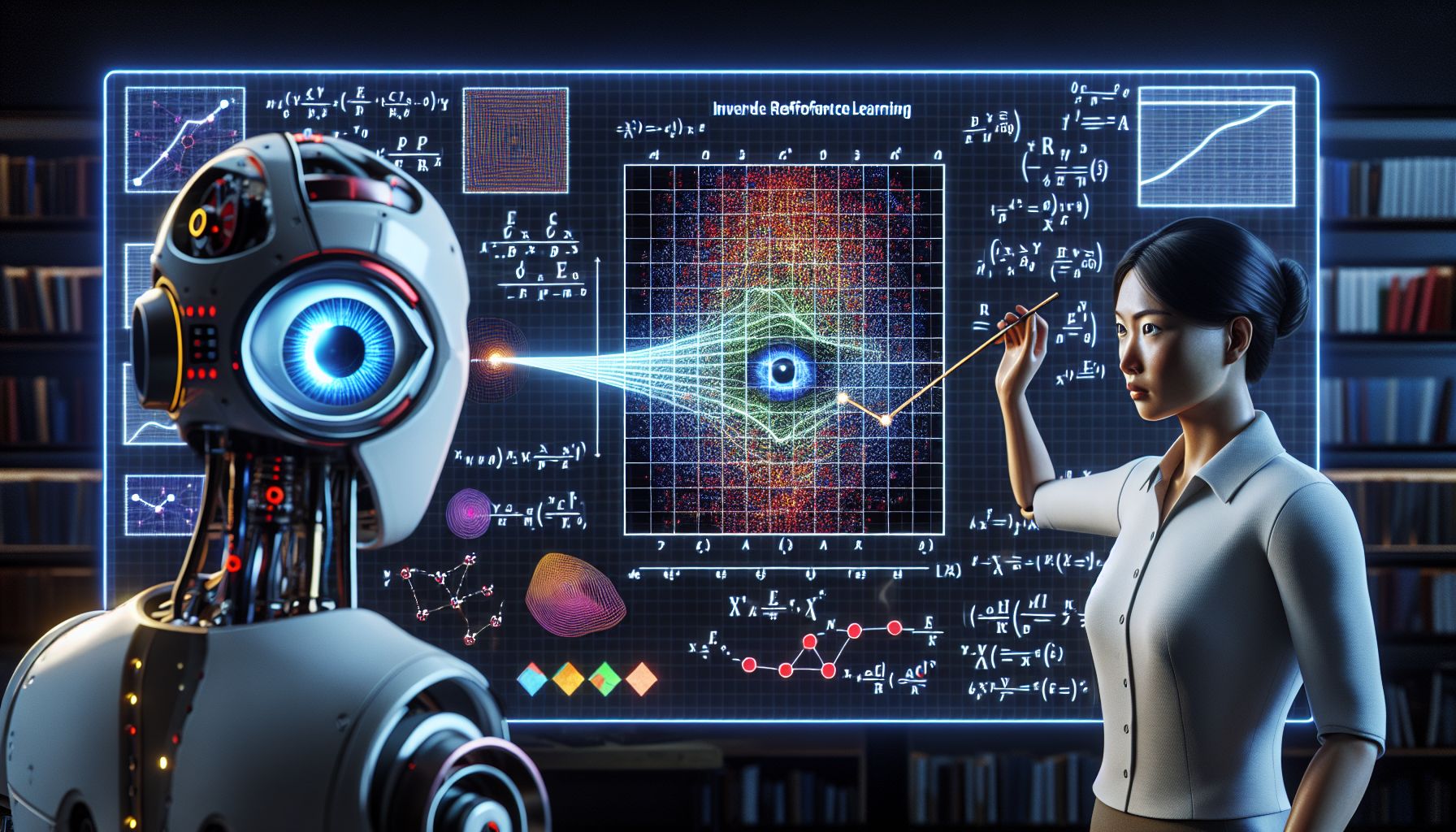📌 Let’s explore the topic in depth and see what insights we can uncover.
⚡ “Imagine if a machine could learn not just from mistakes, but also from success? Welcome to the magical world of Inverse Reinforcement Learning, where AI turns triumphs into treasure maps.”
Every day, we make decisions that maximize our rewards. Whether it’s choosing a delicious meal over a bland one, or deciding to watch a film instead of studying, our brains learn how to make decisions that will yield the most satisfaction. 🔍 Interestingly, essentially the concept of reinforcement learning (RL) in the field of artificial intelligence (AI). RL algorithms learn how to make decisions by interacting with an environment and learning from the rewards of these interactions. But what if we could flip this concept on its head? Instead of learning from rewards, what if we could learn the rewards themselves? 🔍 Interestingly, where inverse reinforcement learning (IRL) comes in. This blog post will guide you through the intriguing world of IRL, where we learn rewards from demonstrations. In this post, we’ll take a deep dive into the concept of IRL, explore how it compares to traditional RL, discuss its applications, and walk through a few examples. This journey will be like being a detective, but instead of solving a crime, we’re decoding complex AI algorithms. Grab your magnifying glass and detective hat, and let’s get started! 🕵🏻♀️🚀
🔄 Understanding Inverse Reinforcement Learning

"Mastering Rewards Through Inverse Reinforcement Learning Demonstrations"
Just like a detective trying to understand the motive behind a crime, inverse reinforcement learning seeks to understand the ‘why’ behind an action. Imagine observing a friend driving from home to work. 👁️ Observe how the route they chose, but you don’t know why they chose it. Maybe they were avoiding traffic, or perhaps they just wanted to drive by their favorite coffee shop. IRL is all about understanding these hidden motivations, or rather, learning the underlying reward function given observed behavior. In more technical terms, IRL is a method used in machine learning where an agent learns the reward function through observing the behavior of an expert. It’s based on the principle that actions are the reflection of some underlying reward structure. IRL flips traditional reinforcement learning on its head, hence the name ‘inverse’.
🧩 Comparing Inverse Reinforcement Learning with Traditional Reinforcement Learning
Let’s imagine we’re trying to teach a robot how to make a sandwich. In traditional reinforcement learning, we’d let the robot try different methods, rewarding it when it does something right, like placing the bread correctly, and penalizing it when it does something wrong, like putting ketchup instead of peanut butter. Over time, the robot would learn the best way to make a sandwich by maximizing its rewards. Now, let’s consider the same scenario with inverse reinforcement learning. Instead of allowing the robot to experiment, we’d show it a video of an expert making a sandwich. The robot would then learn the reward function from these demonstrations. It would understand that applying peanut butter leads to a higher reward than using ketchup, without having to make a mess first. That’s the crux of the difference between RL and IRL. While RL is about ‘learning by doing’, IRL is about ‘learning from demonstrations’.
🔬 Applications of Inverse Reinforcement Learning
IRL is not just a fascinating concept, but it also has numerous practical applications. Let’s take a look at some of the areas where IRL is making its mark:
**Autonomous vehicles
** IRL can help autonomous vehicles understand the behavior of human drivers and replicate it, making self-driving cars safer and more efficient.
**Robotics
** IRL can be used to train robots to perform complex tasks by observing human experts, reducing the need for extensive programming.
**Game AI
** Inverse reinforcement learning can help develop more advanced game AI by enabling them to learn strategies from human players.
**Healthcare
** IRL can be utilized in healthcare to understand patient behavior and develop more personalized treatment plans. 🧩 As for These, they’re just a few examples. The potential applications of IRL are vast and constantly expanding as the field of AI continues to evolve.
🎯 Examples of Inverse Reinforcement Learning in Action
To better understand IRL, let’s look at a couple of real-world examples:
**Autonomous driving
** Waymo, Google’s self-driving car project, uses IRL to understand the driving behavior of humans. The car observes human drivers and learns the reward function, such as the decision to change lanes to avoid traffic.
**Robotic manipulation
** OpenAI used IRL to train a robotic hand to solve a Rubik’s Cube. By observing demonstrations, the robot was able to understand the reward function and successfully manipulate the cube. These examples illustrate how IRL can be used to train AI systems to perform complex tasks simply by observing expert demonstrations.
🧭 Conclusion
Our journey through the world of Inverse Reinforcement Learning has been quite a fascinating one. We’ve discovered that IRL is like playing detective, trying to understand the hidden motives behind actions. We’ve learned how it flips the traditional reinforcement learning concept on its head, focusing on learning from demonstrations rather than rewards. We’ve also explored its various applications, from autonomous driving to healthcare, and seen it in action with real-world examples. In the world of AI, IRL represents a step towards more efficient learning methods, reducing the need for extensive trial-and-error or complex programming. By learning from expert demonstrations, AI systems can quickly understand and replicate desired behaviors. While there’s still much to explore and understand about IRL, its potential to revolutionize machine learning is undeniable. So, the next time you see a robot making a perfect sandwich or a self-driving car smoothly navigating traffic, remember that it might just be using Inverse Reinforcement Learning. Until then, keep exploring, keep learning, and keep pushing the boundaries of what’s possible with AI! 🚀
🌐 Thanks for reading — more tech trends coming soon!
